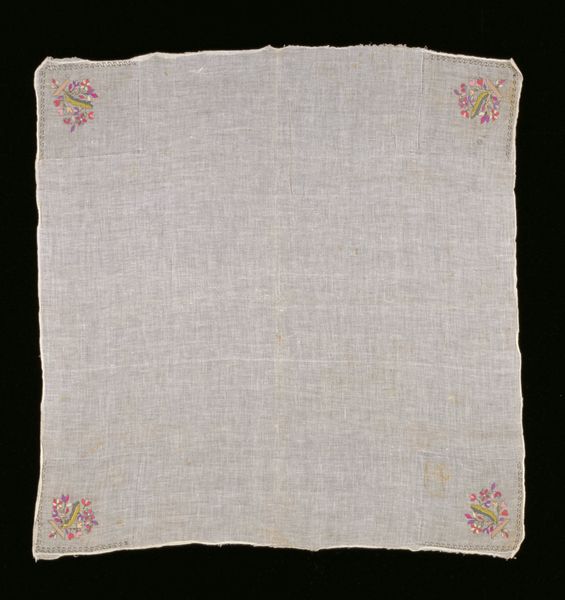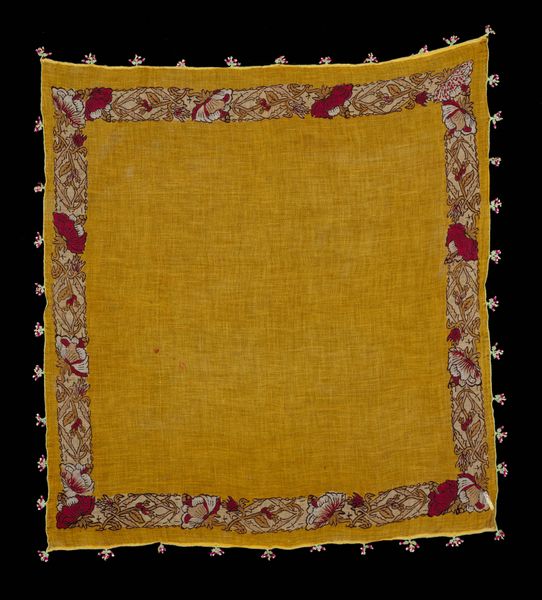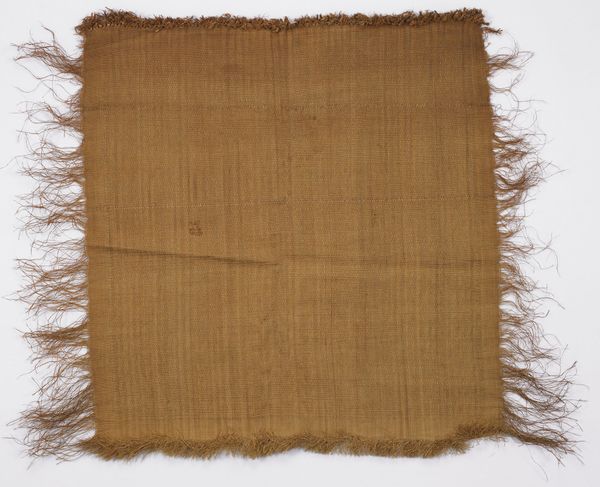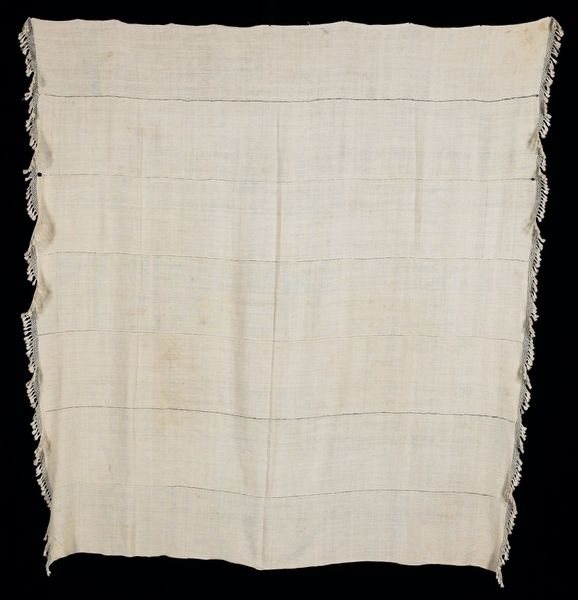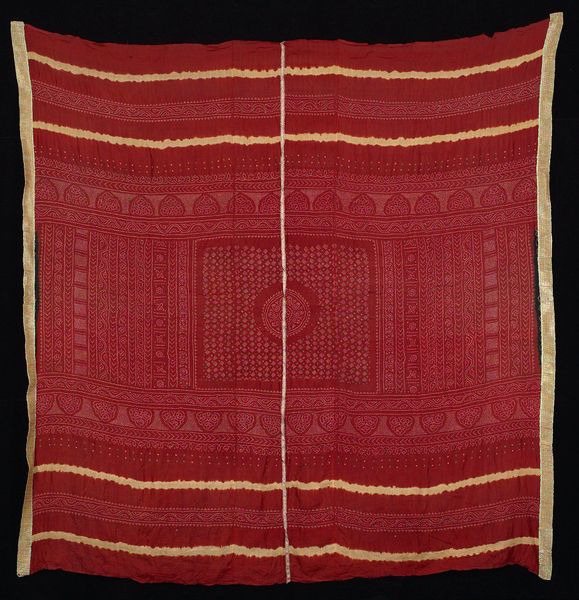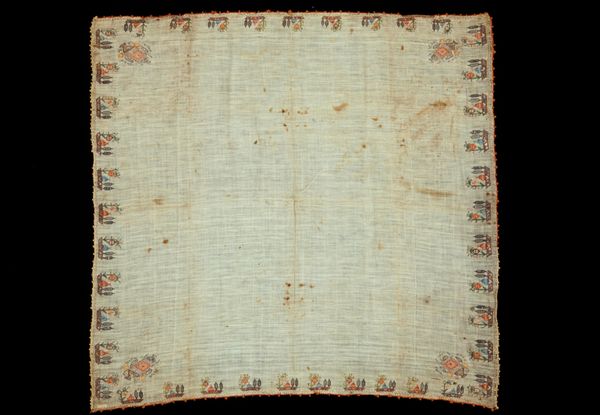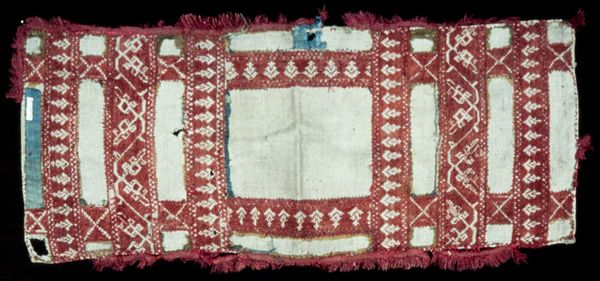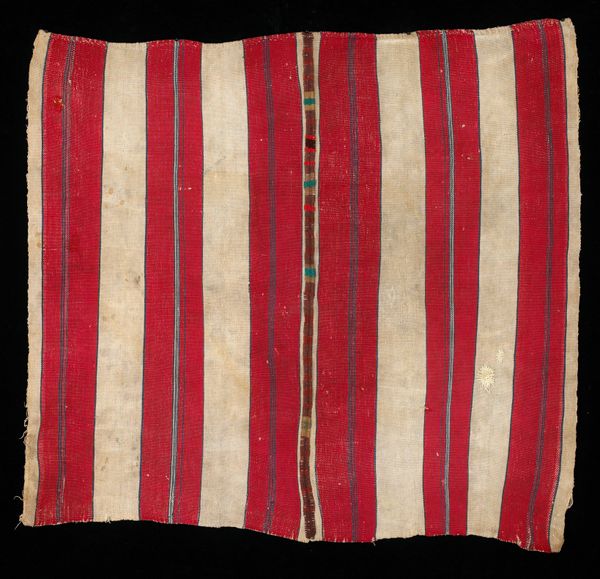
fibre-art, textile
#
fibre-art
#
textile
#
geometric
Copyright: Public Domain
Curator: This is an "Amendil," or head covering, created around the 20th century by the Ida ou Nadif Amazigh people, also known as Berber, and it's currently housed here at the Minneapolis Institute of Art. The piece, primarily crafted from wool textile, showcases the beauty of fiber art. Editor: My first impression? Stripped-down elegance. There's a meditative quality to its geometric simplicity and gentle use of color. Curator: Indeed. Its formal structure, the balance achieved between the undyed wool field and the strong red rectangles, offers a compelling example of minimalist geometric design within textile traditions. One might see echoes of structuralist principles at play here. The tassel embellishments also enhance the form. Editor: I get a sense of practical devotion—almost like a prayer. The wool is probably dyed with natural pigments, creating a very organic effect, a real connection to the earth and their daily routines. Is it too much to imagine the weaver putting prayers into each knot and tassel? Curator: Such interpretations are valid. However, focusing on the piece’s composition reveals an intriguing application of pattern and decoration—elements traditionally linked to Islamic art, a tradition where geometric forms often symbolize deeper cosmic truths. The square shape suggests containment and order, mirroring perhaps the wearer’s controlled demeanor or her protected status within society. Editor: Okay, okay, cosmic truths—I can appreciate the underlying structure, and it grounds my slightly more flighty poetic notions, but it is still beautiful, it feels warm to the touch almost just by looking at it, and there's a sort of… defiance in that boldness of the red that cuts through. Curator: And how the linear perimeter frames the main area adds further definition. One cannot deny how this visual clarity adds to the overall effect, offering a serene viewing experience. The limited color palette emphasizes the focus on form. Editor: For me, it shows how so much meaning can be conveyed using so little. Simplicity as power! It would be fascinating to know the identity of the artist or even just details about her lived existence. What a life! Curator: It encourages an appreciation of how aesthetic restraint can achieve profoundly elegant expressions, particularly within textile forms. Editor: Yes, sometimes less truly is more, or maybe, less *reveals* more. Thank you for enriching this artistic experience, Curator.
Comments
No comments
Be the first to comment and join the conversation on the ultimate creative platform.


